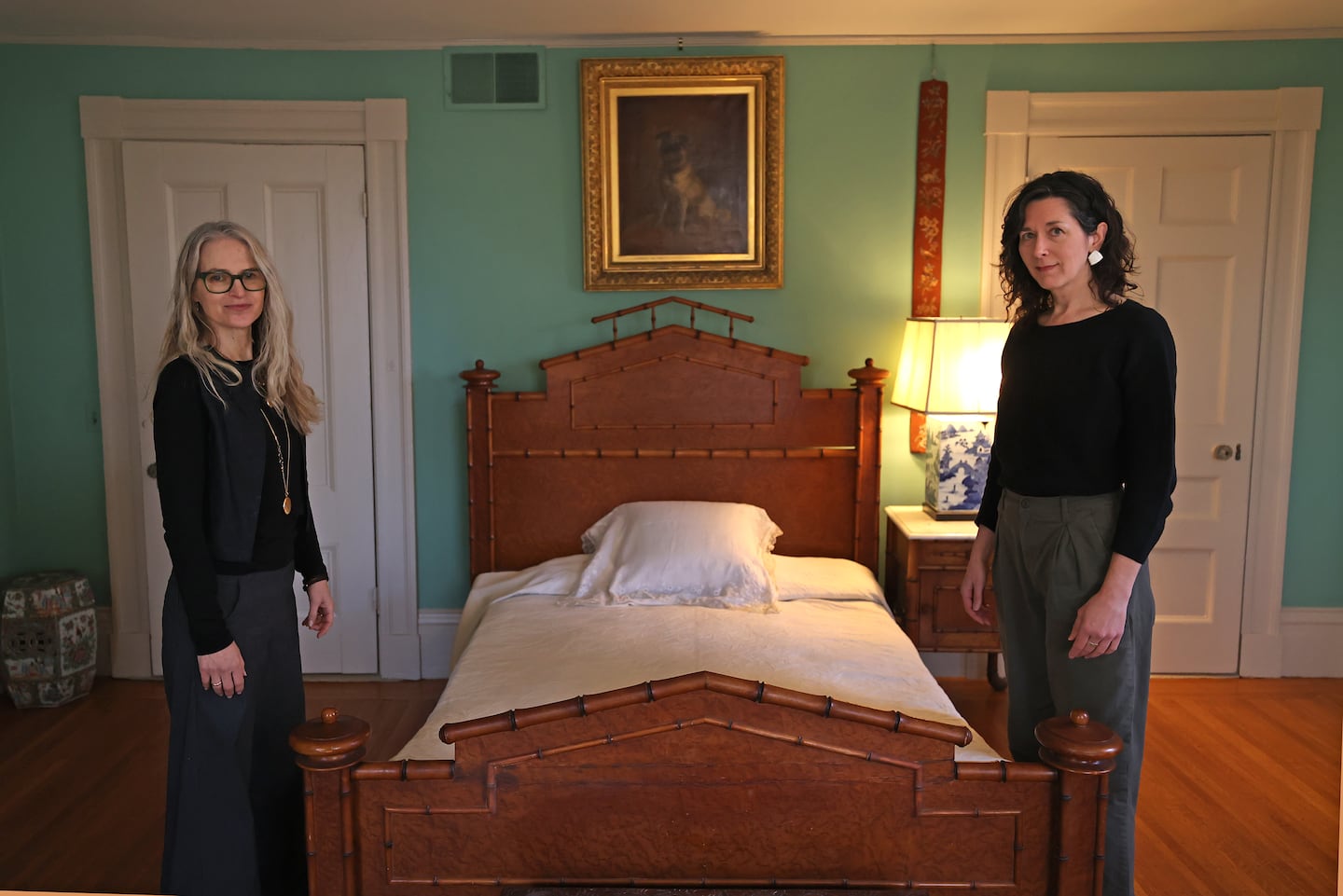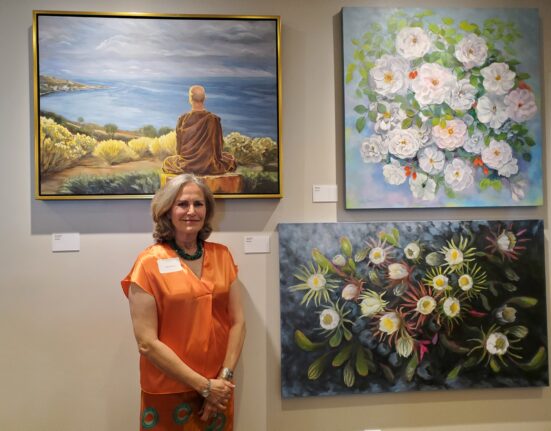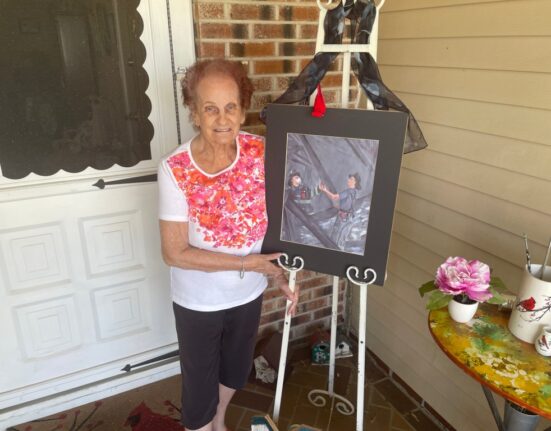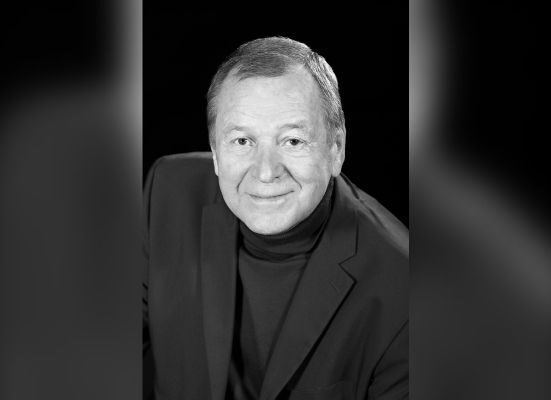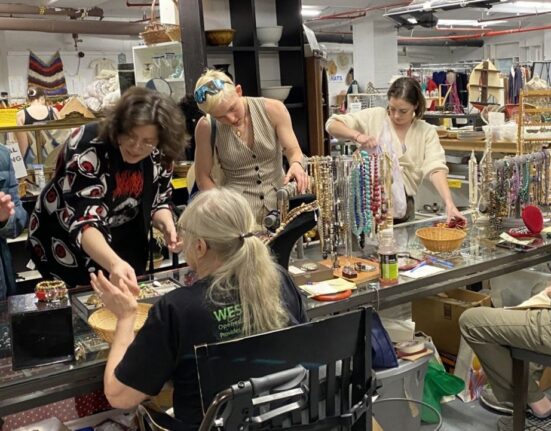“The oldest brother was killed in a typhoon in Southeast Asia when he was 27 years old,” said Lorie Komlyn, the museum’s assistant director. “The two other brothers built this house as a memorial for him,” and placed the heart above the door.
In March, interdisciplinary artists Sue Murad and Deb Todd Wheeler toured the Forbes House as they scouted locations for their upcoming participatory performance “NO SLEEPING,” curated by Shana Dumont Garr. With soundscapes, video projection, observational activities, and a simple dinner, “NO SLEEPING” invites small audiences into the felt memory of a historic house to explore efforts to preserve what — or who — occupied the house. Wheeler and Murad will stage performances twice a month starting in June. They’re still seeking potential sites.

Where to find them: www.debtoddwheeler.org/studioprojects/no-sleeping for registering for “NO SLEEPING,” and for house museums interested in taking part.
Age: The collaboration was “born on March 7, 2024, in my living room,” Wheeler said.
Originally from: Murad is from Derry, N.H. Wheeler spent much of her childhood in Rye, N.Y.

Live in: Both are decades-long Boston artists. “This stew of the sciences, medicine, artists, and academics is such a specific environment for making,” Wheeler said. “With people in this area, we say, ‘This is what I’m doing.’ And they say, ‘I don’t really know what you’re talking about, but I’m down.‘”
Making a living: Wheeler teaches at Clark University. Murad, a videographer, documents other artists, dancers, performance artists, and musicians.
“Does my personal work from my soul earn me money? Not really,” Murad said. “Do I make a living as an artist in the world doing film and video work as a gig worker? Yeah.”

How they started: Wheeler spends time in the unaltered bedroom of her son Lucas, who died in 2017 at 18, where she has taken pinhole photographs. With that ancient technology, she discovered dust motes moving and light shifting in the stillness and was inspired to script a video. She invited Murad to help expand the project into a more communal investigation of memory, grief, and preservation in historic sites.
What they make: “There’s a tour like we just went on — we’re really visitors that are learning about the details and the history of the family,” Murad said. “With our tour it’s almost the flip of that, where the visitors are invited to share their story, their view, or what they’re seeing as poignant, interesting. Curious.”

Why they work in historic houses: “Instead of ‘Look at the artists doing a thing,‘” Wheeler said, “I’m always really interested in how the audience becomes ‘us.‘”
That second-person plural is expansive.
“It’s not just the Sue and me ‘we.’ The house is the ‘we,‘” Wheeler said. “More importantly, the people who donate their time to the house — also ‘we.’ How are we holding these histories through objects?”
Advice for artists: “Remember to dream,” Wheeler said.

Cate McQuaid can be reached at catemcquaid@gmail.com. Follow her on Instagram @cate.mcquaid.

